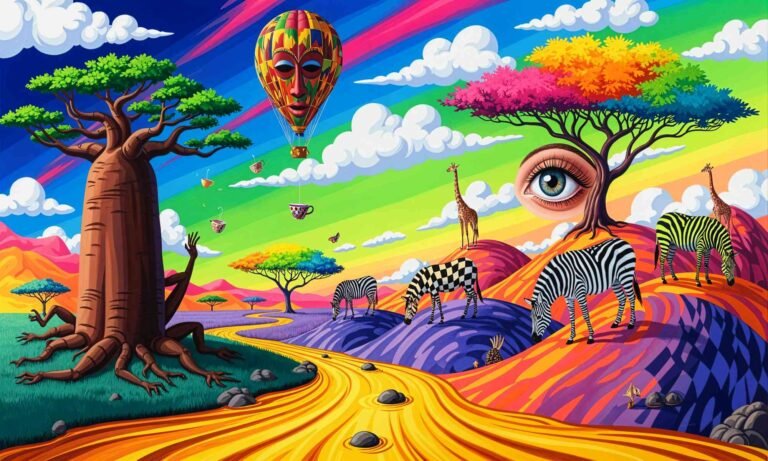Synesthesia is a fascinating neurological condition characterized by the involuntary experience of sensory phenomena in a secondary pathway. This means that stimulation of one sensory modality automatically triggers an experience in another. For instance, individuals with grapheme-color synesthesia may perceive numbers and letters as being associated with specific colors. In such cases, the sight of the letter “A” might invoke a vivid red hue, while the number “2” may appear as bright blue. These unique sensory associations are not just personal interpretations but are consistent and reproducible for those who experience synesthesia.
Another common form is sound-color synesthesia, where auditory stimuli induce visual sensations. For example, particular musical notes or sounds might conjure up images of colors or shapes, creating a rich, multi-sensory experience. It is essential to recognize that synesthesia is not a disorder but rather a variation in human sensory perception, and its effects can differ significantly among individuals. Some may have strong and vivid associations, while others might experience them more subtly.
The Science Behind Synesthesia
Synesthesia is a fascinating phenomenon characterized by the intertwining of sensory modalities, where stimulation of one sensory pathway leads to involuntary experiences in another. The neurological basis of synesthesia has intrigued scientists, leading to various theories regarding its mechanisms. One prominent theory suggests that synesthesia may result from cross-wiring or increased connectivity in the brain. This means that the regions responsible for processing different sensory information may communicate more freely in individuals with synesthetic tendencies, thereby causing blended sensory experiences.
Brain imaging studies have provided valuable insights into the neural underpinnings of synesthesia. For instance, functional Magnetic Resonance Imaging (fMRI) has shown that synesthetes exhibit heightened activity in specific brain regions when exposed to stimuli that trigger their synesthetic perceptions. This heightened connectivity is often observed between regions associated with the senses being combined, such as the visual and auditory cortices. Such findings lend support to the hypothesis that cross-modal integration is altered in synesthetes, allowing them to perceive the world in a more vibrant and interconnected manner than non-synesthetes.
Moreover, genetic factors may play a significant role in the prevalence of synesthetic traits, as some studies have suggested a heritable component. Research has indicated that synesthesia can run in families, hinting at the possibility of a genetic basis that predisposes individuals to develop these unique sensory experiences. Investigating the genetic aspects of synesthesia may not only enhance our understanding of this neurological phenomenon but also shed light on broader questions about the genetic influences on sensory processing in the brain.
Experiencing Synesthesia: Personal Accounts
Individuals with synesthesia often describe their experiences in profoundly colorful terms. For many, the intertwining of senses results in a unique perception of the world.
- Take, for example, the experience of a musician named Lucas, who perceives music not merely as sound but as a vibrant spectrum of colors. To him, a D major chord shines bright yellow, while an A minor resonates in deep indigo. “It’s like a visual dance,” Lucas explains, “where every note paints its own brushstroke across the canvas of my mind.” This synesthetic perception enhances his musical compositions, allowing him to create pieces that evoke specific colors, transforming them into vivid auditory-visual experiences for his audience.
- Similarly, artist Maria describes how synesthesia plays a crucial role in her artistic process. She associates letters and numbers with distinct colors; for instance, the letter ‘A’ is a fiery red, while ‘B’ is a calming blue. Maria admits that her artwork is heavily influenced by these associations. “When I paint, I try to portray the emotions I feel from each letter,” she shares. Her canvases are an explosion of colors representing her personal alphabet, illustrating the strong emotional connections she forms with each character. This captivating method not only enhances her creativity but also allows her to engage viewers on a deeper level.
- Moreover, writer Alex narrates his experiences using synesthesia as a source of inspiration. He often associates vivid colors with specific emotions, and this connection informs his narrative style. “When I think of sadness, I see it as a dull gray,” he mentions. This blend of sensory experiences enriches his storytelling, enabling readers to engage with characters’ emotions in new and evocative ways.
Although each synesthete shares a unique experience, their accounts converge on a common theme: synesthesia profoundly influences their creativity, transforming the mundane into the extraordinary. Through their personal anecdotes, we gain insight into the colorful world of sensory crossovers that define their lives.
Shaping Own Evolution
Like other species, we are the products of millions of years of adaptation. Now we’re taking matters into our own hands.
Meet the cyborg Neil Harbisson, a cyborg artist and transpecies activist based in New York City. He is best known for being the first person in the world with an antenna mounted to his skull and for being legally recognized as a cyborg by a government.
Artist Neil Harbisson was born completely color blind, but these days a device attached to his head turns color into audible frequencies.
Instead of seeing a world in grayscale, Harbisson can hear a symphony of color – and yes, even listen to faces and paintings. This unique ability transforms his perception of the world, blending art, technology, and human experience in an extraordinary way.
“The best voices, whether blue or green or lavender, are full of flashes of light.”
– John Rummell
“The Color of Sound,” in Werner’s Magazine, 1897
Living with Synesthesia: Benefits and Challenges
People with synesthesia experience both advantages and challenges. One key benefit is enhanced memory, as their sensory crossovers create vivid mental associations that improve recall. For instance, someone who sees colors when looking at letters may find it easier to memorize complex sequences, such as mathematical formulas or foreign vocabulary. This ability is especially useful in academic and professional settings, where strong memory retention offers a significant advantage.
Another benefit is increased creativity. Many artists, musicians, and writers identify as synesthetes, attributing their unique sensory experiences to their imaginative ideas. Seeing colors when hearing music or tasting flavors when reading can enrich the creative process, offering a distinctive perspective that sets them apart. These multi-sensory perceptions inspire originality and diversity, allowing synesthetes to make meaningful contributions to the arts, often blending sensory elements in unique ways that resonate deeply with audiences.
Despite these enriching experiences, synesthesia also presents challenges. Many synesthetes face misunderstanding from those who struggle to grasp their sensory world, leading to frustration or isolation. Additionally, environments with excessive stimuli can cause sensory overload, making information processing overwhelming. Finding effective coping strategies, such as mindfulness or structured routines, can help mitigate these difficulties. Raising awareness is essential to fostering understanding and appreciation, enabling society to embrace synesthetes’ unique experiences while recognizing both their talents and struggles.
What’s More
The posts in My Blog feature reflective, story-driven pieces rooted in personal and societal insights.
The topics in My Interests explore abstract, philosophical ideas and their cultural and societal impact.
👁️ 8,972 Views
















